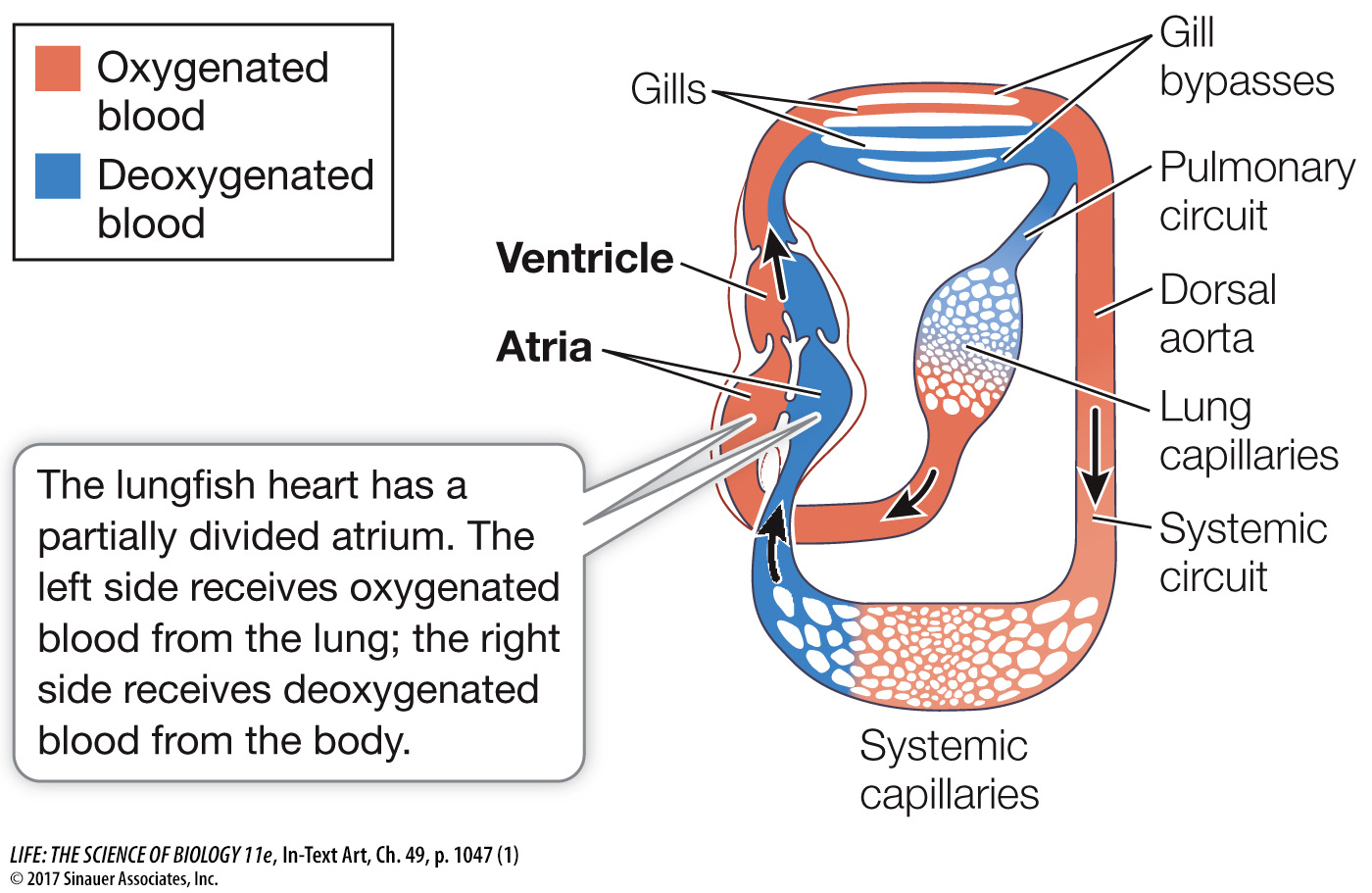Lungfishes evolved a gas-
Lungfishes are exposed periodically to water with low oxygen content or to situations in which their aquatic environment dries up. The adaptation that deals with these conditions is an outpocketing of the gut that serves as a lung. The lung contains many thin-
How does the lungfish circulatory system take advantage of this new organ? In fishes, the gills are arranged on supportive gill arches (see Figure 48.5A and B). Blood flows into the gill arch in an afferent arteriole and leaves in an efferent arteriole. In lungfishes, the blood vessels in the posterior pair of gill arteries have been modified into a low-
1047

The lungfish heart partially separates its flow of blood into pulmonary and systemic circuits; it has a partially divided atrium. The left side receives oxygenated blood from the lung, and the right side receives deoxygenated blood from the body via the sinus venosus. These two bloodstreams stay mostly separate as they flow through the ventricle and the bulbus arteriosus. As a result, oxygenated blood goes mostly to the anterior gill arteries leading to the dorsal aorta, and deoxygenated blood goes mostly to the other gill arches that have functional gill filaments. The blood leaving those posterior gill arches flows to the dorsal aorta as well as to the lung. Thus the dorsal aorta can receive oxygenated blood either from the lung (via the anterior gill arches) or from the gill filaments of the posterior gill arches.
We can conclude that the lungfish lung evolved as a means of supplementing oxygen uptake from the gills. When the water is oxygenated, the lungfish can obtain oxygen through its gills; but in oxygen-